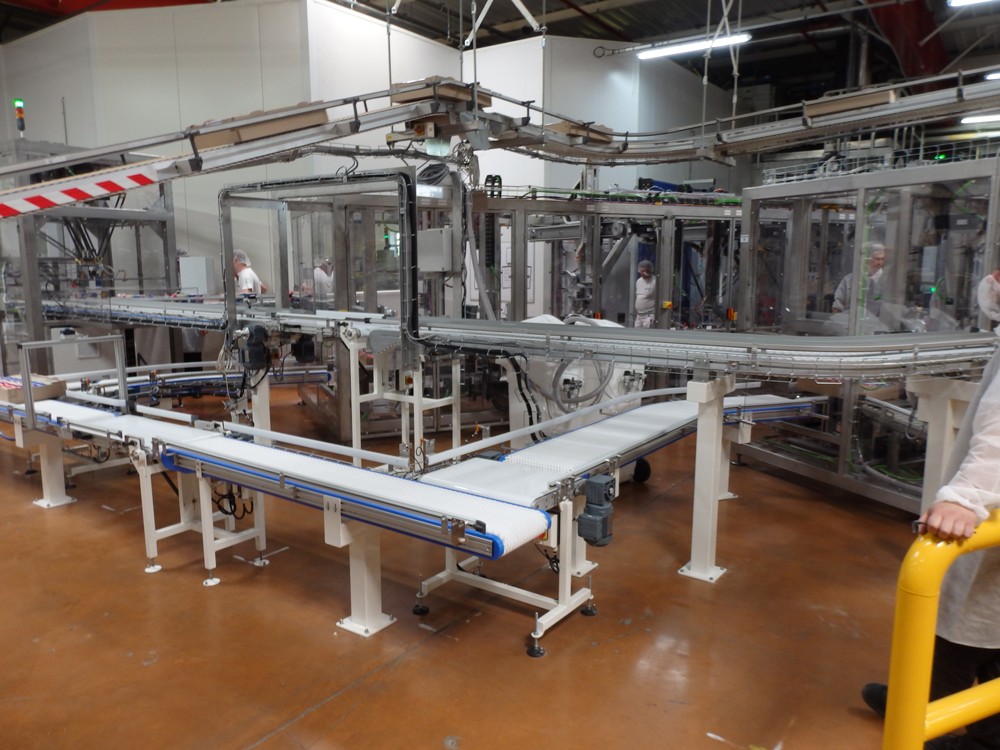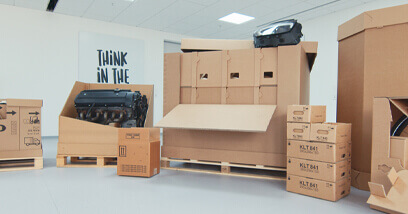Industrial Metal Packaging: Toughness and Sturdiness in Every Style
Wiki Article
Efficient Industrial Recycling Solutions for Sustainable Packaging: A Comprehensive Guide
That's where this thorough guide on reliable commercial recycling options for lasting packaging comes in. By exploring vital areas such as product packaging material option, designing for recyclability, executing recycling facilities, teaming up with reusing partners, and tracking and gauging recycling success, this overview will furnish you with the expertise and tools needed to make informed decisions and drive positive change within your organization. Whether you're a product packaging professional, sustainability supervisor, or merely interested in the subject, this overview will certainly supply important understandings and techniques to aid you browse the world of sustainable packaging.Product Packaging Product Selection
The option of packaging materials plays a vital duty in making certain the sustainability of industrial reusing solutions. When it pertains to lasting packaging, the selection of materials is type in decreasing environmental effect and optimizing recycling effectiveness. Selecting the best products can help minimize waste generation, save resources, and advertise a round economy.Materials like cardboard, paper, glass, and certain kinds of plastics can be recycled multiple times without losing their high quality. On the other hand, materials that are difficult to reuse, such as blended plastics or non-recyclable composites, can produce challenges for the recycling procedure and may end up in burners or land fills.
Another consideration is the use of biodegradable and renewable materials. Packaging made from eco-friendly sources, such as plant-based plastics or biopolymers, can assist minimize dependency on nonrenewable fuel sources and mitigate climate adjustment. Additionally, eco-friendly products damage down naturally with time, decreasing the buildup of waste in landfills.
In addition, the weight and volume of product packaging products must be reduced to reduce transport costs and power consumption. Light-weight materials not just call for fewer sources during manufacturing but likewise contribute to decrease carbon emissions throughout transportation.
Creating for Recyclability
In order to ensure the recyclability of packaging products, thoughtful layout is important. Creating for recyclability entails producing product packaging that can be quickly sorted, divided, and processed in recycling centers. One important aspect of making for recyclability is the choice of products. Packaging designers should focus on the use of materials that are commonly approved for reusing and have established recycling infrastructures. Materials such as glass, light weight aluminum, and certain kinds of plastic, like pet dog and HDPE, are frequently recycled and should be favored over products that are expensive or hard to recycle.An additional crucial consideration in designing for recyclability is the removal of unnecessary elements or materials. By decreasing the variety of layers, finishes, and additional components, packaging can be made easier and much easier to recycle. Furthermore, designers need to aim to reduce the use of mixed materials, as they can make complex the recycling procedure.

Implementing Recycling Framework
Reliable execution of recycling facilities is crucial for the success of commercial recycling services. Without correct infrastructure in area, the reusing process comes to be ineffective and ineffective, impeding the general goal of lasting product packaging.To execute reusing facilities efficiently, a number of key variables need to be considered. To start with, there need to be a well-organized collection system that promotes the splitting up and collection of recyclable products. This can consist of marked recycling bins in public rooms, as well as collaborations with waste monitoring firms for curbside pick-up and sorting.
When gathered, the recyclable materials require to be transported to recycling facilities in a prompt way. This requires reliable logistics and transport networks, guaranteeing that the products reach the proper facilities immediately.
At the reusing facilities, advanced sorting and informative post handling modern technologies must remain in area to divide different kinds of products effectively. This includes using automated sorting makers, optical scanners, and hand-operated sorting techniques.
Additionally, there should be a robust market demand for recycled products. This can be achieved through partnerships with producers and markets that utilize recycled products in their production procedures. Creating a secure market for recycled products incentivizes the recycling sector and advertises the round economic situation.
Working Together With Recycling Partners

One trick facet of teaming up with reusing companions is the establishment of clear communication networks. It is necessary to establish open lines of communication to assist in the exchange of info, updates, and feedback. This enables both parties to stay notified regarding the progress of reusing initiatives and deal with any type of challenges or issues that may occur.
Furthermore, cooperation can entail collaborations in applying and developing reusing programs. Reusing companions can supply beneficial understandings and guidance in establishing effective collection systems and establishing the most appropriate recycling technologies. By collaborating, services and recycling companions can optimize the recycling process and decrease waste.
Furthermore, partnership can expand past the operational elements of recycling. It can additionally encompass campaigning for and education campaigns. By signing up with forces, businesses and recycling companions can increase recognition regarding the relevance of reusing and advertise the adoption of lasting Click This Link packaging techniques among customers and various other stakeholders.
Monitoring and Measuring Recycling Success
To make certain the effectiveness of commercial reusing services and the accomplishment of sustainable product packaging goals, it is vital for businesses and their recycling companions to establish a thorough system for monitoring and gauging recycling success (bulk container recycling). Tracking and measuring reusing success enables organizations to analyze the effect of their reusing initiatives, recognize areas for enhancement, and established meaningful targets for future developmentOne means to track reusing success is through the use of data collection and analysis tools. By accumulating information on the amount of product packaging waste generated, the percent of waste that is recycled, and the kinds of materials being recycled, companies can get valuable understandings right into their recycling performance. This data can after that be examined to recognize trends, patterns, and locations of ineffectiveness.
One more essential facet of tracking and measuring reusing success is developing standardized and clear metrics. This permits services to compare their efficiency against market benchmarks and track their progression with time. Metrics such as recycling prices, waste diversion prices, and greenhouse gas exhausts can provide a measurable action of a company's recycling success.

Verdict
Finally, executing reliable industrial recycling remedies for lasting packaging calls for cautious consideration of product packaging product choice, designing for recyclability, executing reusing facilities, collaborating with recycling companions, and tracking and measuring reusing success. By integrating these techniques, organizations can add to an extra lasting and environmentally-friendly approach to product packaging, reducing waste and advertising the circular economy.By exploring crucial areas such as packaging product option, making for recyclability, applying reusing infrastructure, teaming up with recycling partners, and monitoring and gauging recycling success, this overview will certainly furnish you with the knowledge and devices necessary to make informed decisions and drive positive change within your company. Packaging designers must prioritize the use of products that are extensively approved for recycling and have actually established reusing frameworks.Cooperation with recycling partners is necessary for the effective application of commercial recycling options and the success of lasting product packaging goals. By joining pressures, companies and recycling partners can increase recognition about the importance of recycling and advertise the adoption of lasting product packaging check my source methods among consumers and various other stakeholders.
By gathering data on the quantity of packaging waste created, the percent of waste that is recycled, and the types of materials being recycled, organizations can obtain beneficial understandings into their recycling performance.
Report this wiki page